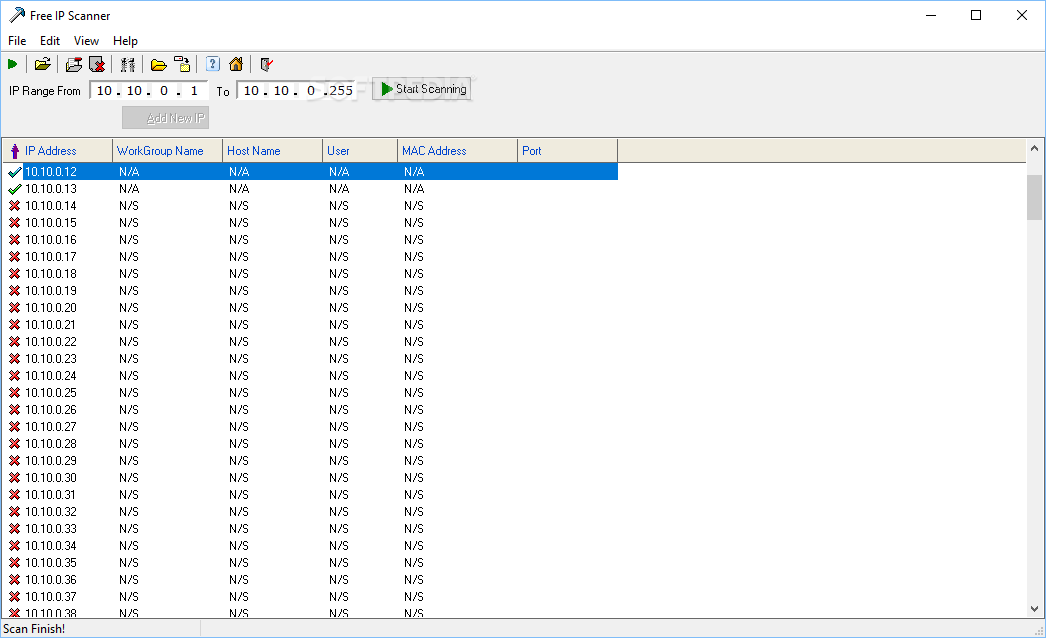
Click the volume in the tree (left panel) to highlight the volume position in the Scanning Area (right panel).You can wait until SuperScan finishes, or you can inspect and manage found partitions (volumes) "on-the-fly": You can check the estimated run time displayed on the status panel at bottom of the Scanning Area. Then search for files and folders to be recovered Same way that you treat other device nodes in the list. You may treat SuperScan virtual folder and its contents the The contents of this folder displayed in the tree (left panel)Īs well as in the Volumes tab (right panel). Has been added to the Local System Devices list. For each SuperScan process a new virtual folder named SuperScan.Its state being saved as well, so you can resume SuperScan later on, after loading SuperScan results - evenĪfter re-boot, or on another machine having the same HDD/USB disk attached If you have saved paused SuperScan results, If SuperScan has been paused, you may resume it by clicking Resume button at bottom or byĬhoosing Resume SuperScan from the context menu. To stop the SuperScan at anytime,Ĭlick Pause red button at bootom, or choose Pause SuperScan from the context menu. The statistics and progress bar appear underneath the scanning area.Click Scan or press Enter to start SuperScan process.(including user-defined signatures being loaded from template file) and recover them later on: The Some option lets you choose the file types you want to recognize based on signatures Option instructs SuperScan to recognize all possible supported signatures. It will speed up the SuperScan process, and less memory (RAM) will be consumed. The None option means that no signatures recognition will be applied, To recover your documents or images from the Signature Files virtual folder later on. (because no file header could be detected, only file data), however their content can be valid. Will be placed into the Signature Files virtual folder and will have abstract filenames The detected files, when this option is turned on, Signatures and would try to reconstruct files of certain types. Provided that the files are not fragmented, Scan technology would detect the file If a disk has been severely damaged and partitionsĪnd files are not found,you may turn on the File types to be recognized based.Time, however you may find more recoverable partitions You select all partition types, the scanning takes a longer Clear the checkīoxes next to the partitions that you do not want to look for. To the partition types that you want to look for. In the Analyze and detect deleted or damaged partitions area, select the check boxes next.Then type other area parameters and click Add again If you need several areas to be scanned, define area parameters and click Add button, To select disk's area manually, type the starting sector number in theįrom field and the number of sectors in the Size field.If you click Scan now - this area will be scanned by default You can switch geometry display to other units (Bytes, MB and GB) using drop down combobox. Fields From and Size contain currently selected object's geometry in sectors.Right-click the disk and choose SuperScan.To open the SuperScan Options dialog, do one of the following:.In the Local System Devices list, select a physical device, or a volume that contains your data.It may be a Fixed Disk, USB external or Removable Disk, Memory Card, and even Floppy disks.

Usually such files do not have name, date stamp and other file record information. These files collected to Signature Files folder and can be recovered from there. When SuperScan finds file data and the deleted or damaged file is not fragmented, the SuperScanĬan detect files by matching template patterns to the found data. Slow process, however it usually gives much better results than QuickScan. SuperScan reads eachīoot sector, but also tries to reconstruct the drive structure,īased on residual clues to the drive's system structures that remain on the disk surface. If a partition cannot be found, SuperScan keeps searching. Physical device searching for all possible logical drives (volumes)Īnd partitions, whether they are existing, damaged or deleted.

SuperScan processes the whole surface of the SuperScan gives a chance to detect damaged file records as well as to reconstruct some known file types by signatures. Heavily overwritten by other data, so you are not able to find your deleted data using QuickScan and Search procedures. Under a device node in the Local System Devices list,Īnother reason to use SuperScan is when the volume has been quick-formatted, or disk's surface has been In other words, if you do not see a logical drive listed Volume that you know has been deleted or damaged. Use SuperScan when trying to recover a partition or Use SuperScan to analyze deleted and damaged volumes


 0 kommentar(er)
0 kommentar(er)
